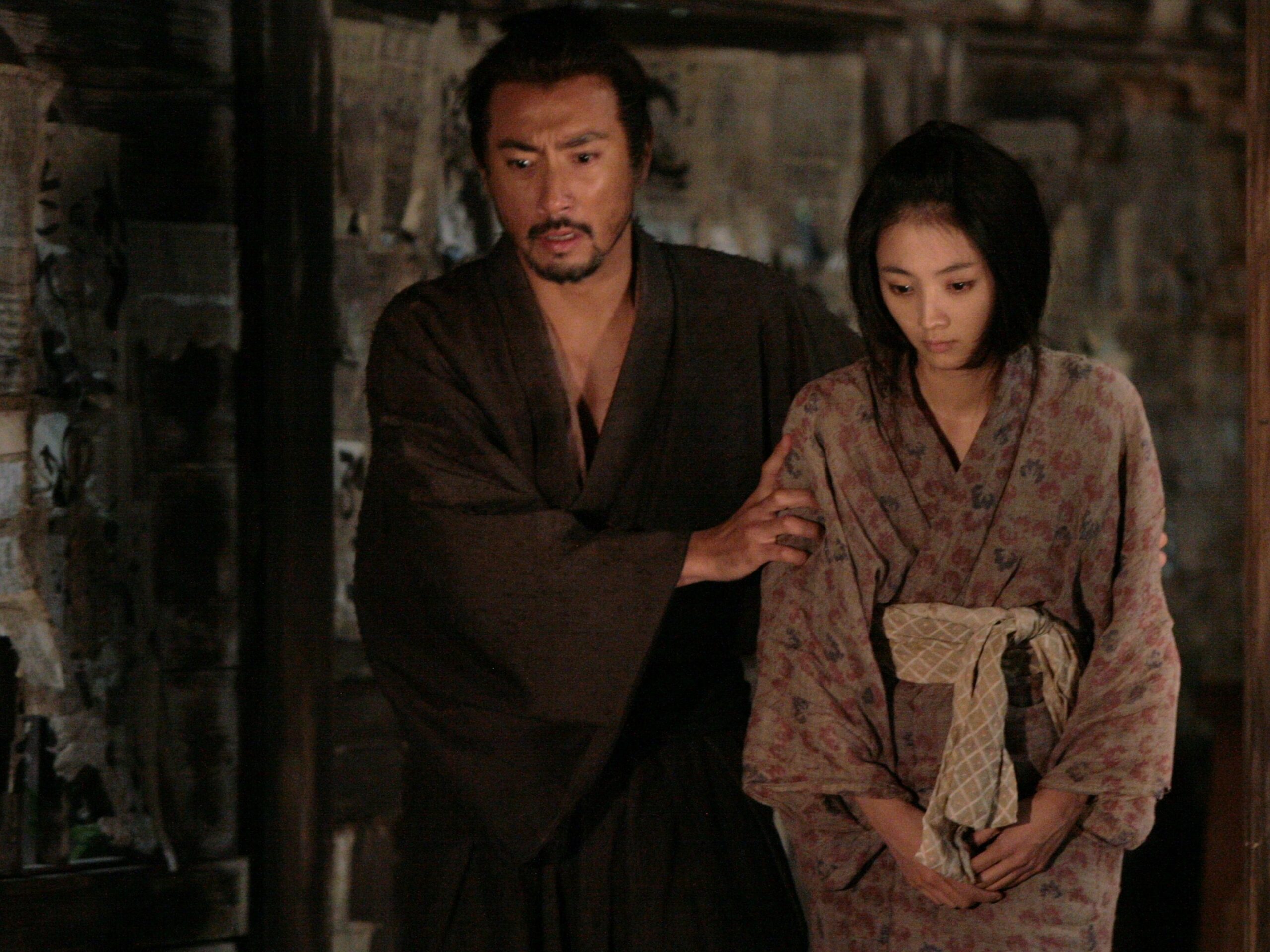By Chlotrudis Independent Film Society
Rating: 3.5 cats
Director: Takashi Miike
Starring: Ebizo Ichikawa | Eita | Hikari Mitsushima | Koji Yakusho | Munetaka Aoki

Original language title: Ichimei
Country: japan, united_kingdom
Year: 2012
Running time: 126
IMDB: http://www.imdb.com/title/tt1728196/
Jason says: “HARA-KIRI seems like an odd choice for a 3D remake – it features far more sitting around and dueling with subtle turns of phrase than it does swordplay – but with Takashi Miike in the director’s chair, one figures that the film will be transformed into something strange and exciting. Shockingly, it’s not, and despite hewing close to the previous version with plenty of talent on-hand, this version (ICHIMEI) doesn’t manage the alchemy that made Masaki Kobayashi’s version (SEPPUKU) a classic fifty years ago.
“The retainers in the prosperous house of Ii roll their eyes when ronin Hanshiro Tsukumo (Ebizo Ichikawa) comes to the gate and requests the use of their courtyard to commit seppuku in October of 1634; ‘suicide bluffs’ (where a samurai makes such a request in hope of being sent away with money or, if he is very lucky, being offered a position) are common in this time of peace with several houses recently disbanded. Before granting his request, chief retainer Kageyu Saito (Koji Yakusho) tells Tsukumo of Motome Chiziiwa (Eita), another ronin who made a similar request two months ago only to have the house’s squire, Hikokuro Omodaka (Munetaka Aoki) suggest that an example be made to deter others. After hearing this story, Tsukumo relates what brought him to the House of Ii that day, and how the story is not as simple as Saito thought.
“This story differs very little from the Kobayashi version, but in defense of screenwriter Kikumi Yamagishi, what would you change? It is a great story of the powerful being cruel to the impoverished unaware how the actions they undertook for their own convenience may come back to bite them. The distinctive structure both serves to reflect the very formal world in which the movie takes place and to cleanly present the different sides’ perspectives without making the facts subjective but still changing apparent cowardice to desperation. The way things unfurl undeniably makes the audience interested in how it ends. Miike and company are clearly committed to the themes of the movie: There are few scenes that don’t directly speak to the difference between truly honorable behavior and that which satisfies the words of some code; the final scene is a perfect capper, speaking of the admiration of symbols above reality.
“And yet, there’s something just a bit lacking here. Maybe it’s just familiarity – if you already know the story, there are no surprises (and there’s at least one scene, when Tsukumo reveals his trophies, that you know has done better). The filmmakers also invest a little more time and detail in the backstory than is really necessary; most of the audience probably doesn’t care about the specifics of what the clan’s orders were in terms of maintaining a castle’s defenses, for instance, and characters expressing early admiration for Ii is mainly useful for weak, after-the-fact irony. One pivotal scene walks a tight melodramatic line and may stray too far in one direction for some. It’s a lot of little, non-crippling things, but it can be enough.
“The cast is part of it; while Ebizo Ichikawa (who has some big shoes to fill; Tetsuya Nakadai played his part in the previous version) is a fine exemplar of nobility and humility in most of the flashback scenes, he gives a little too much in that crucial scene, and I’m not quite sure whether examinations of his previous scenes with Koji Yakusho would reveal hidden layers. Yakusho is a familiar face, and predictably acquits himself well as the retainer who finds himself drifting across the line between ‘stern’ and ‘cruel’. Eita gives a heartfelt performance as a young man who finds a desperate situation turn horrific, while Munetaka Aoki serves as a sort of dark mirror – Omodaka is the same age as Chiziiwa and also born into the samurai class, but has an abstract understanding of life and its hardships; his viciousness is intellectual but immature.
“The look of the film is striking. An image of a dragon on the wall looms over certain scenes, and the darkness makes it look like a real monster in the room. I wonder if the illusion persists when the film plays in 3D. Though I saw the film in 2D (and wonder whether the dark palette is as 3D-unfriendly as it looks or if it’s just an artifact of my streaming set-up), I’m curious how the third dimension treats it. Miike and cinematographer Nobuyasu Kita define space very well, treating the scenes within Ii’s manor especially almost like they were filming a stage play, and the few sword fighting scenes toward the end are crystal-clear, even with a great many combatants.
“HARA-KIRI: DEATH OF A SAMURAI is solid enough that if you haven’t seen the 1962 version of HARAKIRI, you likely won’t have a lot to complain about; it suffers mainly in comparison. But if you have, and are hoping for something that is either an equal or at least has Miike’s signature on it, you might be in for a letdown. 3.5 cats
“Seen 13 August 2012 in Jay’s Living Room (theatrical rental, Amazon streaming).”
